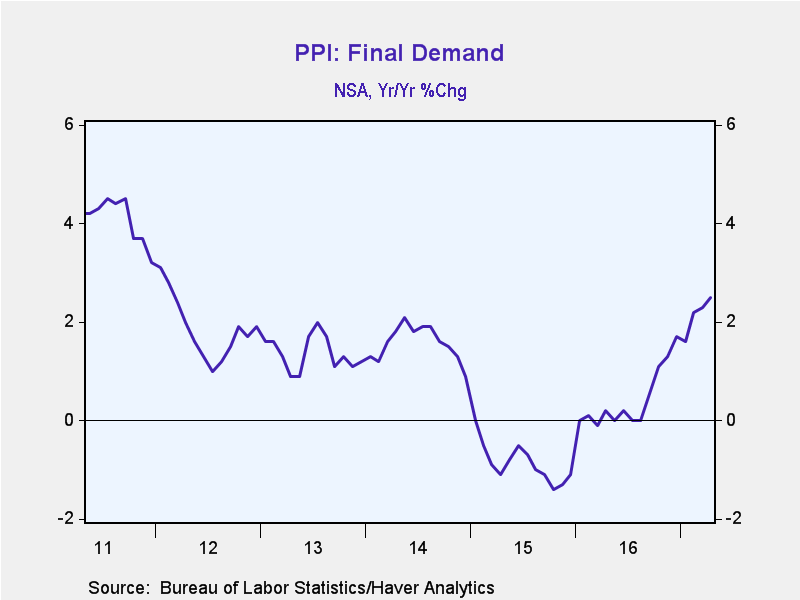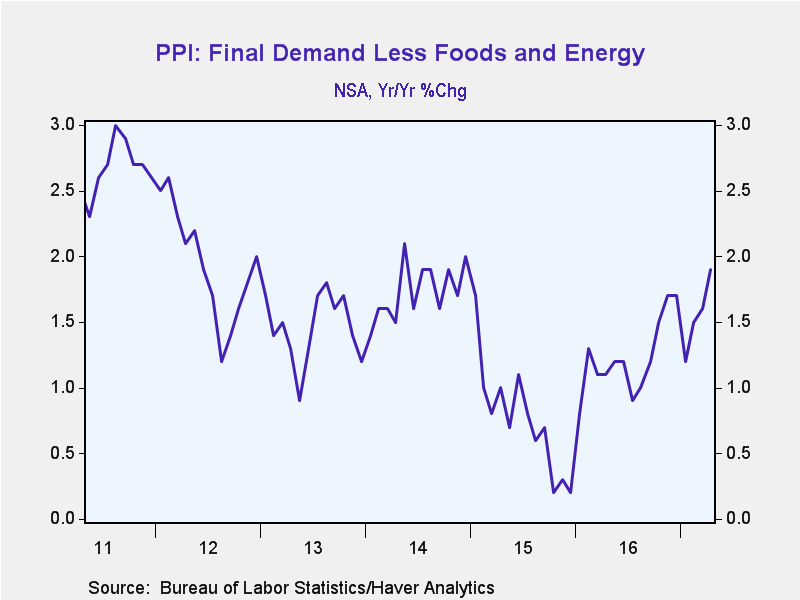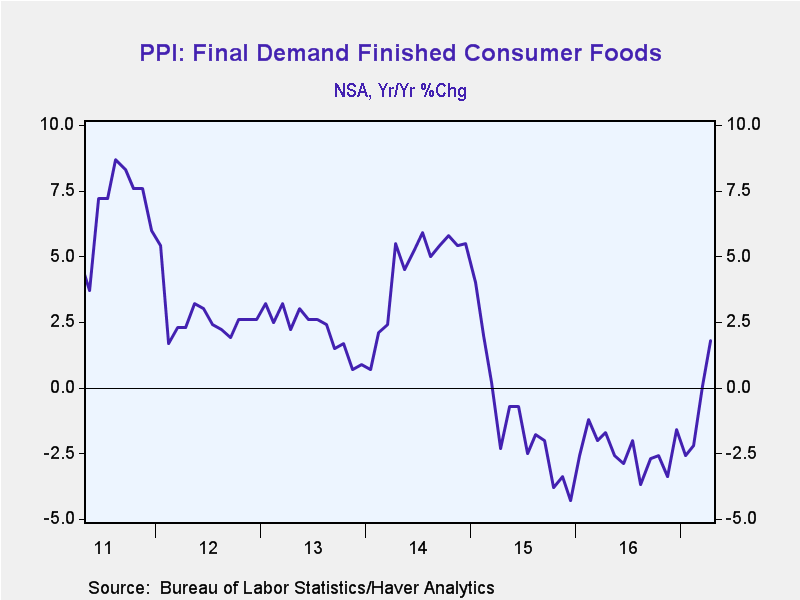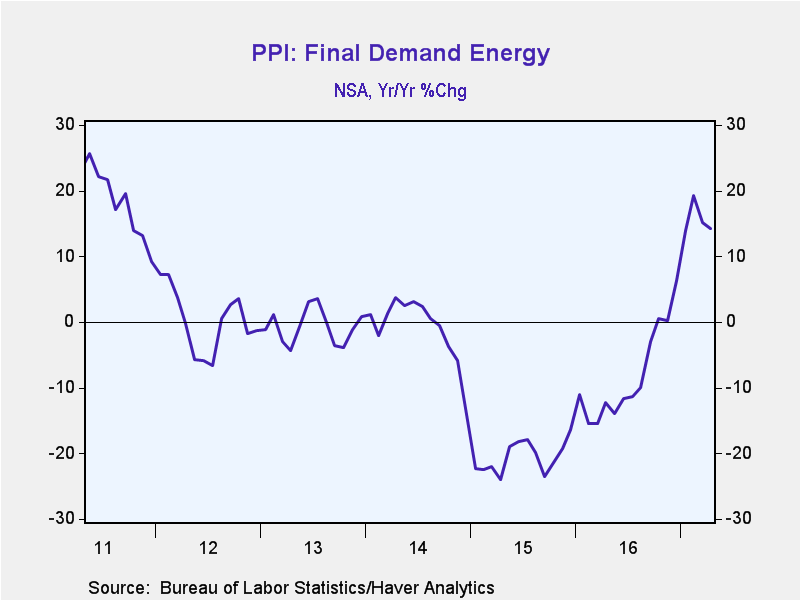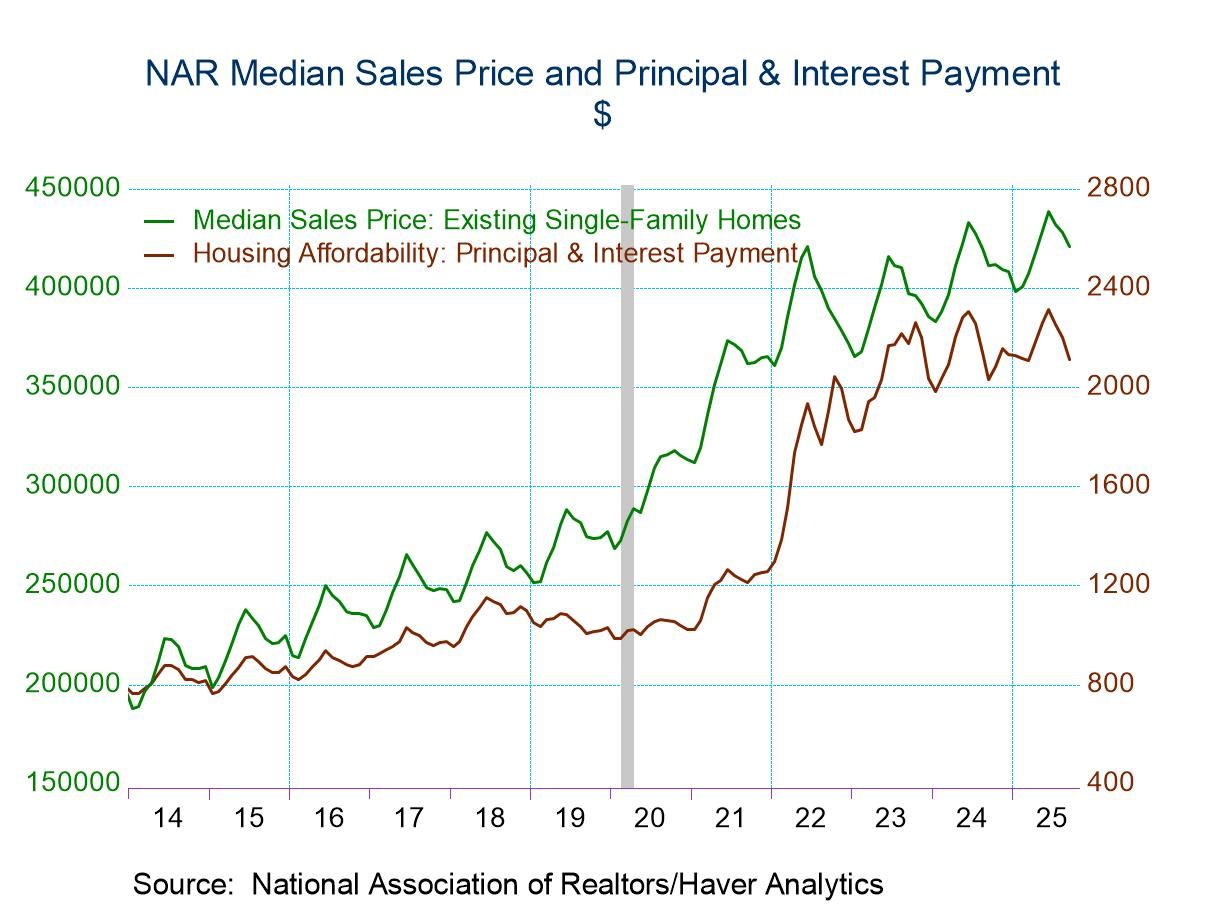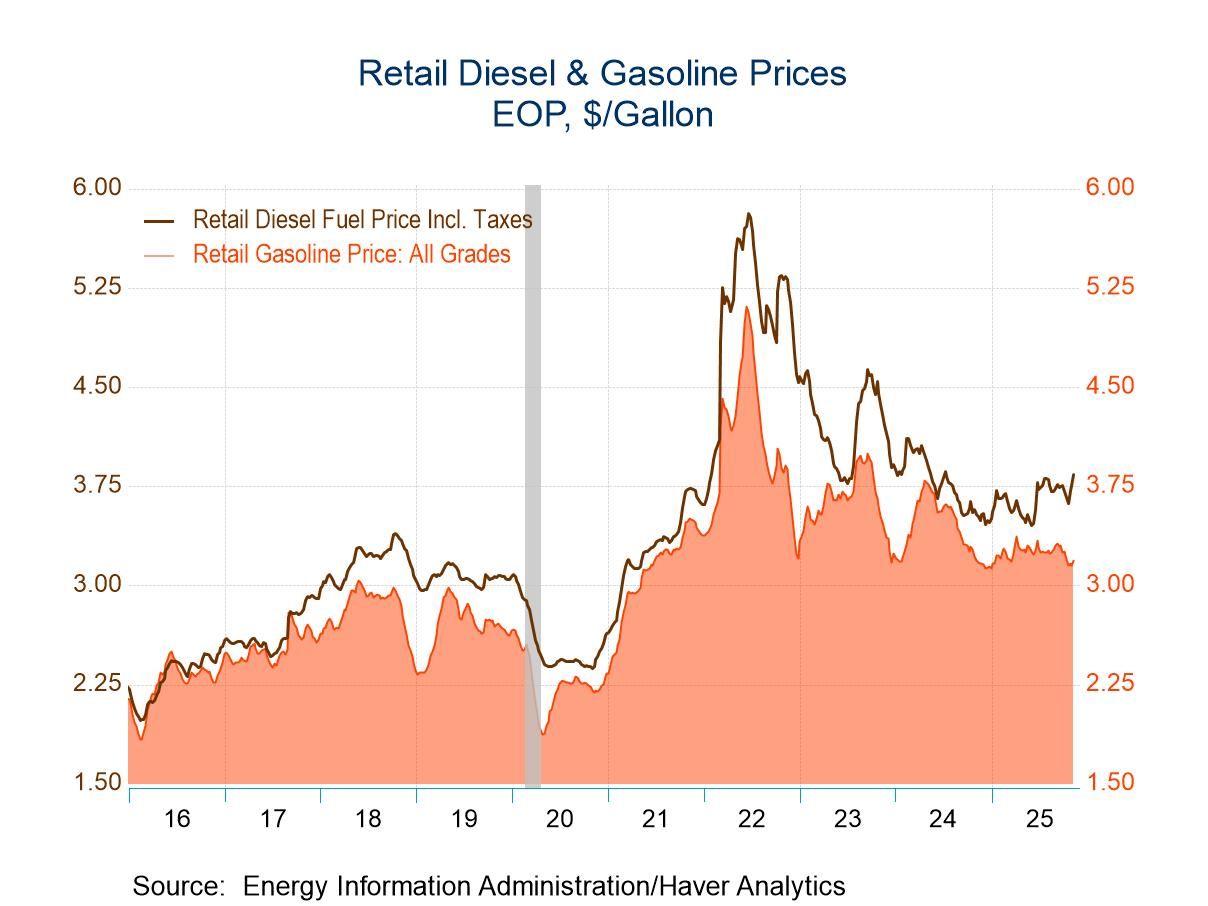 Global| May 11 2017
Global| May 11 2017U.S. Producer Prices Strengthen
by:Tom Moeller
|in:Economy in Brief
Summary
The headline Final Demand Producer Price Index increased 0.5% during April following a 0.1% March dip. Being the strongest gain in three months, it pulled the y/y increase to 2.5%, the firmest since February 2012. The monthly increase [...]
The headline Final Demand Producer Price Index increased 0.5% during April following a 0.1% March dip. Being the strongest gain in three months, it pulled the y/y increase to 2.5%, the firmest since February 2012. The monthly increase compared to expectations for a 0.2% rise in the Action Economics Forecast Survey. The PPI excluding food and energy surged 0.4% following no change during March. The 1.9% y/y rise was the firmest since January of last year. A 0.2% gain had been expected.
An updated measure of "core" PPI inflation, final demand prices excluding food, energy, and trade services prices, surged 0.7% (2.1% y/y) following a 0.1% uptick.
Final demand goods prices increased 0.5% (+4.0% y/y) after a 0.1% slip. Final demand energy prices rebounded 0.8% (14.3% y/y) as gasoline prices recovered 3.9% (26.0% y/y). Home heating oil prices declined 5.2% (+55.7% y/y), but natural gas prices improved 2.0% (14.2% y/y). Food prices strengthened 0.9% (1.5% y/y). Beef & veal prices eased 1.1% (-10.1% y/y) but fruit & melon prices strengthened 19.8% (26.1% y/y). Egg costs surged 15.0% (12.1% y/y), but bakery product prices eased 0.1% both m/m and y/y. Pork prices fell 3.3% (+0.3% y/y) and dairy product prices declined 1.4% (+3.9% y/y).
Nondurable consumer goods prices excluding food & energy improved 0.4% after a 0.3% gain. The y/y increase of 3.4% was down, however, versus a 4.1% y/y rise in June 2015. Women's apparel prices rose 0.3% y/y and men's apparel costs rose 1.2% y/y. Finished consumer durable goods prices rose 0.2%. The 1.4% y/y increase was elevated versus little y/y change as of nine months ago. It reflected a second 0.4% rise (2.1% y/y) in passenger car prices and a 0.1% uptick in light truck costs (2.0% y/y). Furniture prices gained 0.3% (1.4% y/y) while appliance prices ticked 0.1% higher m/m and y/y. Private capital equipment prices improved 0.1% (0.9% y/y). Showing strength were industrial chemical prices, up 14.2% y/y.
Prices of final demand for services increased 0.4% (1.8% y/y) following 0.1% decline, but trade services prices declined 0.3%. That followed a 0.1% slip during March. Trade of finished goods fell 0.5% (+0.9% y/y) after a 0.2% dip. Prices for transportation of private passengers surged 1.9% (4.4% y/y), while transportation & warehousing costs improved 0.3% (1.6% y/y).
Final demand construction costs increased 0.4% (1.0% y/y) following a 0.2% gain. It was the strongest increase in six months. Private construction costs gained 0.5% (1.1% y/y) while government sector building prices rose 0.3% (0.9% y//y).
Prices of processed goods for intermediate demand increased 0.5%. The 5.4% y/y gain compared to 5.7% price deflation during 2016.
The PPI data are contained in Haver's USECON database with further detail in PPI and PPIR. The expectations figures are available in the AS1REPNA database.
Benefits and Challenges from Globalization is the title of today's speech by William C. Dudley, President & CEO, Federal Reserve Bank of New York. It can be found here.
| Producer Price Index (SA, %) | Apr | Mar | Feb | Apr Y/Y | 2016 | 2015 | 2014 |
|---|---|---|---|---|---|---|---|
| Final Demand | 0.5 | -0.1 | 0.3 | 2.5 | 0.5 | -1.0 | 1.8 |
| Excluding Food & Energy | 0.4 | 0.0 | 0.3 | 1.9 | 1.3 | 0.8 | 1.8 |
| Excluding Food, Energy & Trade Services | 0.7 | 0.1 | 0.3 | 2.1 | 1.2 | 0.6 | 1.2 |
| Goods | 0.5 | -0.1 | 0.3 | 4.0 | -1.5 | -4.9 | 1.4 |
| Foods | 0.9 | 0.9 | 0.3 | 1.5 | -3.2 | -3.1 | 3.7 |
| Energy | 0.8 | -2.9 | 0.6 | 14.3 | -8.2 | -25.6 | -3.2 |
| Goods Excluding Food & Energy | 0.3 | 0.4 | 0.1 | 2.3 | 0.8 | 0.4 | 1.6 |
| Services | 0.4 | -0.1 | 0.4 | 1.8 | 1.5 | 1.0 | 1.9 |
| Trade Services | -0.3 | -0.1 | 0.4 | 1.1 | 1.5 | 1.4 | 2.0 |
| Construction | 0.4 | 0.2 | -0.1 | 1.0 | 1.3 | 3.2 | 1.9 |
| Intermediate Demand - Processed Goods | 0.5 | 0.1 | 0.4 | 5.4 | -5.7 | -14.0 | 1.1 |
Tom Moeller
AuthorMore in Author Profile »Prior to joining Haver Analytics in 2000, Mr. Moeller worked as the Economist at Chancellor Capital Management from 1985 to 1999. There, he developed comprehensive economic forecasts and interpreted economic data for equity and fixed income portfolio managers. Also at Chancellor, Mr. Moeller worked as an equity analyst and was responsible for researching and rating companies in the economically sensitive automobile and housing industries for investment in Chancellor’s equity portfolio. Prior to joining Chancellor, Mr. Moeller was an Economist at Citibank from 1979 to 1984. He also analyzed pricing behavior in the metals industry for the Council on Wage and Price Stability in Washington, D.C. In 1999, Mr. Moeller received the award for most accurate forecast from the Forecasters' Club of New York. From 1990 to 1992 he was President of the New York Association for Business Economists. Mr. Moeller earned an M.B.A. in Finance from Fordham University, where he graduated in 1987. He holds a Bachelor of Arts in Economics from George Washington University.


